Everyone poops.
Luckily for us, humans have invented this amazing system called a toilet. So, we don’t have to “do” anything with our waste – pun not intended.
Our dogs are not so lucky, though, and it often falls in our laps to dispose of their poop correctly.
If you’re a responsible dog owner, you’re probably planning on cleaning up your dog’s poop like an accountable person.
After all, no one wants to be the bane of the neighborhood.
However, what you should do with your dog’s poop after you pick it up can get quite complicated. Don’t worry — we’ll explain the best options available to you below!
What to Do with Your Dog’s Poop: Key Takeaways
- Some dog poo disposal methods are easier — and better for the environment — than others.
- Be mindful of pathogens potentially lurking inside your dog’s waste, as they can cause you, your family, other pets, and wildlife to become sick.
- Some of the best options for doggie-doo-doo disposal include flushable waste bags, composting bins that’ll allow you to turn your dog’s waste into fertilizer, and dog-poop collection services – read even more below!
Dog Waste Statistics in the USA
Dogs poop a lot – as you probably know.
All that poop doesn’t just disappear once it plops down, though. It has to go somewhere, and there’s a lot of it!
Some fun dog poo data:
- The average dog produces about 4 lbs of poop a week (that’s 208 lbs of poop per year).
- There are about 89.7 million dogs in the United States.
- That means our pets produce roughly 18 billion pounds of poop each year.

Why Dog Doo-Doo is Dangerous
If it isn’t cleaned up, dog waste typically washes into your town’s watershed, where it can pose a severe problem.
In fact, a lot of of the bacteria found in local water systems is caused by dog waste.
What’s worse is that dogs often harbor bacteria that can make humans sick, which can contaminate the water supply, and potentially cause serious infections.
The sheer amount of dog poop can mess with the local air quality as well – which you might already know based on the fumes that come from your pet’s mess.
But this isn’t just an olfactory problem — your dog’s poop can release bacteria into the air, which can also make us sick.
Are Plastic Bags a Good Poop-Containment Option?
Given the troubling issues discussed above, you may be feeling quite proud of yourself if you’ve been using plastic bags to clean up your pet’s poop.
But don’t let yourself off the hook yet.
While feces is decently decomposable, the plastic bags you’ve been using to contain the poop do not decompose readily. They will decompose eventually, but it’ll take quite a long time.
So, this leaves us with billions of plastic bags sitting in landfills each year after fulfilling their single purpose of containing your dog’s poop.
This begs the question: If plastic bags aren’t the ideal dog poop containment solution, what are we supposed to do with it all?
How To Dispose of Dog Poop the Green Way (Or At Least Green-ish)
Luckily for us, there are several ways you can properly dispose of your four-footer’s feces without ruining the environment.
Sure, these techniques are a bit more effort than tossing your bagged poop in the dumpster, but you’ll be doing nature a huge favor.
Here are some ways you can properly dispose of your pet’s poop the green way:
1. Throw the Poop in the Trash
“But didn’t you just tell me NOT to throw my dog’s poop away?”
Yes, yes, but there is a caveat: Not all plastic bags are created equal.
While the plastic grocery or bread bags many of us use to clean up our dog’s poop are not the best option, this is not true for all bags — some are environmentally friendlier than others.
For example, some dog poop bags are “biodegradable,” which means they will breakdown after a short period.
The term “biodegradable” is somewhat confusing because some of these bags do not break down into harmless substances. They don’t just sit around and become dirt.
Instead, many are a mixture of cornstarch and plastic. When they degrade, the cornstarch goes away, but the plastic powder stays behind.
This is not much better for the environment than your reusable plastic bag from the grocery store – and you’re paying extra for them.
Still, many biodegradable poop bags are a slightly better alternative to traditional poop bags, because they are corn-based instead of oil-based.
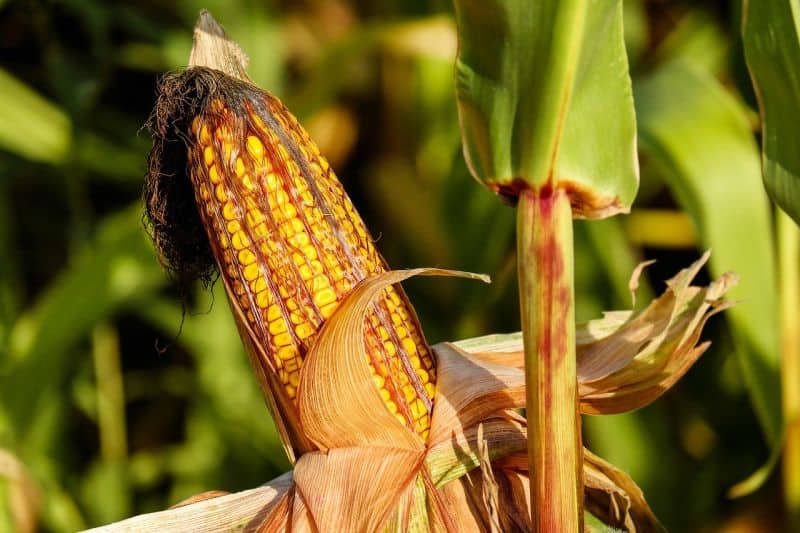
But there are even better options.
For example, you can look for baggies that are labeled as “compostable,” rather than “biodegradable.”
This means they can be composted (broken down) at home, which also means they are a better option than the bags made from plastic powder.
Don’t breathe a sigh of relief yet…
Unfortunately, even these compostable corn plastics can create problems too!
They’re quite time-intensive to make since manufacturers have to do all sorts of things to break down, stabilize, and turn the corn into the plastic. All this work and effort increases the size of the carbon footprint associated with producing the bags.
And additional problem with the “biodegradable” plastic used in many poop bags is that it is made by a large agricultural business called Cargill.
This company has a track record of environmental issues and is one of the largest producers of GMO corn, which itself may cause environmental and societal problems.
Cargill was named “worst company in the world” by the Mighty Earth, an environmental organization. They have seriously impacted the health of the rainforest, misreported trade values to mislead governments, and have forced native inhabitants off their land according to the report.
The bags aren’t always compostable either, since they require a specific temperature and humidity to breakdown. They are also not going to sit around and just become dirt.
With all of that said, if you do continue to use these bags to clean up after your dog during walks, we recommend double bagging the poo-poo and tying knots at the top of both bags.
This keeps the waste inside properly sealed and prevents it from accidentally falling out, which would ruin the whole point of bagging it in the first place.
For a slightly more environmentally friendly option, you can use a poop scooper to put poop in a single, large poop can or bag. You can then use a single bag to contain a whole lotta poop.
Of course, this means the poop will sit around for long before you throw it away, which can get nasty quite quickly.
The Bottom Line: Throwing Your Dog’s Poop Away
Bagging your dog’s poop and throwing it in the trash is not ideal, but it is better than leaving it on the ground.
If you use compostable bags, you’ll slightly reduce the environmental harm caused… so yay!
2. Burying Dog Poop
Burying your dog’s poop is another common and somewhat easy option – if you own the land to do it, of course.
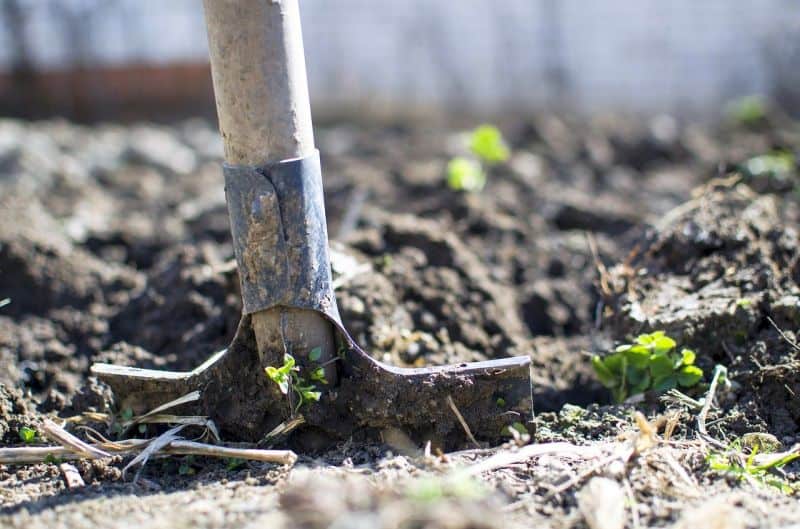
Just understand that while burying your dog’s poop is better than leaving it on your neighbor’s lawn, it isn’t a perfect solution.
Simply burying dog poop can harm the soil quality since all the bacteria from your dog’s waste is concentrated in one spot.
Nevertheless, if you decide to use this method, you need to dig a hole in your yard that is at least 1-foot deep.
This helps prevent the bacteria from reaching the top of the soil as it breaks down, which could be a problem for your dog, your family, and the wild animals in the area.
Do not bury your dog’s poop near your garden, since you don’t want to introduce this potentially dangerous bacteria to your food (no, your dog’s poo is not natural manure compost)!
Plus, you don’t want to be digging around in poop-soil while you’re trying to plant your plants either.
You’ll also need to switch up your poop-burying spot often to spread the germs and cooties out around your yard. Don’t forget to contact your city before you start any digging to ensure you don’t expose any buried lines too, as that could get you into serious doo-doo.
Usually, it will take about two months with the right conditions for the waste to decompose.
In dry climates or cold temperatures, it can take much longer, though. And unfortunately, some of the bacteria and parasites in the waste can wait around for many months.
With this method, you are also not doing much to protect your local watershed. It will rain, and some of the bacteria will end up in your local creeks, rivers, and lakes.
The Bottom Line: Burying Your Dog’s Poop
Burying your dog’s poop is not a magic bullet, but it is a reasonably safe and simple approach that doesn’t add any additional plastic to local landfills.
It won’t, however, protect your local rivers and streams from the germs in your dog’s poop.
3. Flush Dog Poop Down the Toilet
With the right tools, you can take advantage of our modern plumping to do away with your dog’s feces and just flush it down the toilet.
However, for this to work, you need the correct bags.
Regular plastic bags cannot be flushed, but there are specialty flushable bags that can be.
One of the best recommended flushable poop bags on the market are these ones by PetBro.
This is a sponsored placement, in which an advertiser pays a fee to be featured in this article. Learn more
There are other flushable poop bags on the market, but in all honesty, there isn’t a vast difference between the top brands.
As long as you aren’t getting extremely low-quality bags, you’re going to be okay. These ones by PetBro are some of the cheapest, so you might as well go with them.
With these bags, make sure you’re just flushing just your dog’s poop, not the sticks and stones that you may pick up with it.
Also, be sure not to tie the bags. If you do, air will get trapped, and the bag won’t flush.
Older homes can have difficulties handling these flushable bags. If your home is older, clogs will be more likely. Speak to a plumber to find out if your home can handle it.
You may also want to speak with your water treatment plant to ensure that they can handle the bags as well. Each city’s system is different.
The actual flushing process is pretty straight forward: Just pick it up the poo-poo with a flushable bag and drop it in the toilet instead of the trash can.
As an alternative, you could just flush your dog’s poop sans bag, but you’d need a dedicated set of poop pick-up gloves.
If your dog has a yard he does his business in, you could collect all of your yard poo into one big bin and flush it down the toilet in piles (you definitely don’t want to flush a week’s worth of poo at once – no toilet can handle that)!
You may even want to consider training your dog to poop and pee in one specific spot to make your clean up efforts a bit quicker and more efficient!
You cannot flush your cat’s poop – this only works for dogs.
Cat poop contains a parasite called toxoplasmosis, which can cause humans and a number of other animals to become sick. This parasite is not destroyed by sewage treatment, so it will escape into the waterways and begin infecting other critters.
The Bottom Line: Flushing Your Dog’s Poop
Flushing your dog’s poop down the toilet with flushable bags is a pretty eco-friendly option and it won’t cost you much money, either. Just be sure that the pipes in your house can handle the bags first.
4. Sign Up for a Dog Poop Disposal Service
Similar to trash pickups, you can pay for someone to come pick up your dog’s poop in some areas. Sometimes, they’ll even remove it from your yard themselves (sweet)!
DoodyCalls is one specific company that is available in some areas. They handle yards of all sizes and clean the whole yard for you.

There are other companies as well, such as Poop 911.
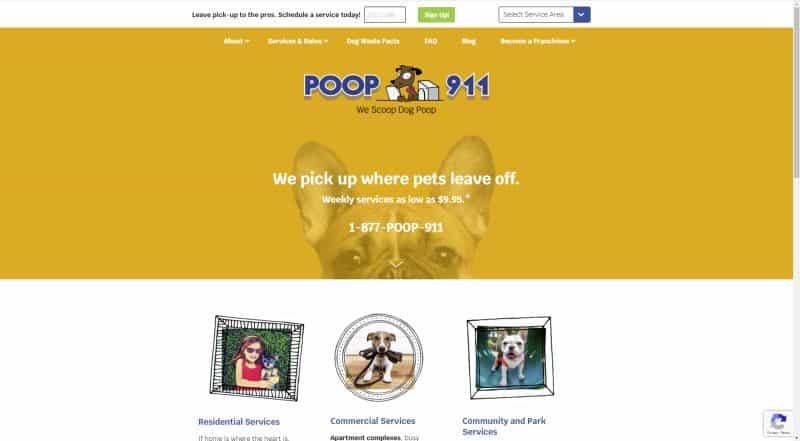
If you just want to avoid dealing with your dog’s poop altogether, these professional pooper scoopers can do it for you.
Often, these companies compost the poop after they have picked it up. However, this varies from company to company. Some may just throw it away, which wouldn’t be very much different from you just throwing it away yourself.
So, be sure to do your homework before signing up with a specific service.
The Bottom Line: Utilizing a Poop Disposal Service
Honestly, this is probably the easiest and safest option for owners, although it’ll cost some money. Plus, if you select a company that composts the collected waste, you’ll reduce the environmental impact of your dog’s poop.
5. Install a DIY Dog Waste Septic System
A simple and easy solution to the poop problem is to install a dog waste septic system insert, like this Doggie Doo Drain.
This is a sponsored placement, in which an advertiser pays a fee to be featured in this article. Learn more
This line attachment screws directly into your sewer or septic clean-out. After it is installed, you can place your dog’s waste in the cylinder and wash it down with a hose, sending it straight into your sewer system.
This is very similar to flushing your dog’s feces down the toilet, except you’re by-passing your plumbing and merely putting it straight in the tank.
No bags are required, making it a completely green method for disposal.
However, keep in mind that these systems can be compromised by cold weather, according to the Washington Department of Ecology. If it gets unusually cold where you live, you may want to consider a different solution.
The Bottom Line: Installing a Dog Waste Sewer Line Attachment
If you don’t mind investing a (small) amount of money and busting out your tools to install the thing, a sewer line attachment is a fantastic option. It’s pretty environmentally friendly, easy to use, and won’t entail any ongoing costs.
6. Set Up a Dog Waste Containment System
The Doggie Dooley is a small septic tank for your dog’s waste. It works very similarly to a composter, using natural bacteria to break down your pet’s waste. And it’s not harmful to the soil or your pets!
This is a sponsored placement, in which an advertiser pays a fee to be featured in this article. Learn more
The digester powder you add to help the waste breakdown is also completely safe and contains natural bacteria and enzyme cultures. It is very similar to the digesters you would add to your septic tank.
This system is very inexpensive and can be buried right into your yard. Just open it up and add in your pet’s waste and it’ll decompose it for you.
Alternatively, you can build your in-ground dog waste disposal system.
To do this, just take any old plastic garbage can and drill a few holes on the sides. Cut out the bottom and dig a hole big enough to bury the garbage can.
Of course, you’ll still want to top exposed to you can add in your dog’s poop.
Add some rocks and gravel to the hole for drainage and then add in the trash can. Fill in around the trash can with dirt and ensure that it is just above ground level. You can always add in more gravel or rocks if you dug the hole too deep.
Whenever you first add dog poop, add in some septic starter. This can be found on Amazon or any hardware store. Wait 48 hours for the septic starter to start working, and then you’ll be able to add in more poop daily.
The waste will biodegrade and then flow back into the soil.
Keep in mind, the bacteria that break down the waste does not work in colder weather. This might not be an issue if you have a smaller dog or use an unusually large trash can; you can just keep adding poop until the weather warms up again.
If your climate is unusually cold though, you may have to get a poop storage tank and then transfer the waste you collect in the winter to your septic system during the warmer months.
These storage cans are basically like diaper genies, but for dogs. Pet Genie makes a great model.
This is a sponsored placement, in which an advertiser pays a fee to be featured in this article. Learn more
The Bottom Line: Dog Waste Containment Systems
Septic-system-style containers are very environmentally friendly, affordable to buy or build, and easy to use.
However, they don’t work fantastically in cold weather. So, you may want to pair it with a poop storage tank, which will hold your dog’s waste through the winter, until temperatures warm enough to start using your septic system again.
7. Store the Dog Poop in a Waste Digester Bin
If you like the idea of composting your dog’s poop but don’t want to bury something in your yard, they do make waste digester bins that’ll compost your dog’s poop in above-ground fashion.
The Pet Waste Wizard BioBin is a particularly popular product in this category. It breaks down your pet’s waste using a digester – a collection of bacteria and enzymes very similar to the pet septic tanks we previously discussed.
This system comes with an appropriate digester, so you just need to add it in.
This is a sponsored placement, in which an advertiser pays a fee to be featured in this article. Learn more
The can itself is designed to breakdown dog poop quickly, so you won’t have to worry about nasty smells. It is also made of sturdy, recycled materials and can even handle cat waste too.
Eventually, the waste will break down into a fertilizer-like substance.
The fertilizer it creates can be used in your yard and garden, except under vegetable plants (you don’t want germs contaminating your produce).
The Bottom Line: Waste Digester Bins
Waste digester bins provide an eco-friendly poop disposal method, which yields fertilizer you can use in your yard. They’re not only easy to use, but they don’t require you to bury them in the ground either.
8. Compost the Poop
If you don’t want to buy a waste digester setup, you could compost the poop DIY-style.
Don’t worry — it is much easier than it sounds.
First, choose a sunny, dry spot where you can begin composting your dog’s poop.
Next, purchase a suitable compost bin or use the bin you already have.
Be aware of where the water flowing through this area goes, as you don’t want it running off into your dog’s pen or where your children play. Poop water is a no-go!
For every two shovels of dog waste you add to the pail, add a shovel full of sawdust or another carbon-rich material. Shredded newspaper, dog bedding, fallen leaves, and chopped hay will also work.
Add a bit of water until the ingredients are spongy, and Keep adding in ingredients until the compost is two or three feet deep.
Once you have enough materials, stop adding fresh stuff and cover the mixture.
Microbes will then begin to break down the compost pile, releasing heat in the process. You will need to check the temperature every day. When you notice that the temperature is starting to drop, it is time to turn the mixture with a rake or shovel. This usually takes about two weeks.
After you do this several times, the waste will stop heating up and become nearly ready to use. However, before spreading the resulting compost in your yard, you’ll want to leave it alone for a few months to help kill off the parasites that might have been in your pet’s poop.
Many people build compost bins to keep their dog’s waste in, though you could technically do this with just a few tarps.
Rigid plastic bins are a common choice, though many people also build their bin out of pallets.
Tumbler bins — which make the mixing process easier — are also available, but will likely need to be purchased. Keep in mind that they are somewhat challenging to make.
This is a sponsored placement, in which an advertiser pays a fee to be featured in this article. Learn more
Wire bins are preferable for those with just one or two dogs who do not create much waste.
You can add lots of leaves and grass clippings to this type of compost bin without any problem. They are also extremely convenient and easy to use.
While composting should kill parasites and harmful bacteria as long as the materials get hot enough, you should not use the resulting fertilizer for vegetables just in case.
You can use it for flowers, grass, shrubs, trees, and any other type of plant you aren’t going to be eating.
The Bottom Line: Composting Your Dog’s Poop
Composting your dog’s poop is eco-friendly and a great way to produce your own fertilizer. It does take a bit of work, but the process and setup is all pretty affordable, unless you buy a fancy tumbler bin (which isn’t that expensive anyway).
9. Add Your Dog’s Poop to a Wormery
An organic wormery also turns your dog’s waste into usable fertilizer. However, this method uses worms instead of digester or bacteria.
There are quite a few wormeries you can purchase commercially, such as this one:
This is a sponsored placement, in which an advertiser pays a fee to be featured in this article. Learn more
You can build your wormery too, if you prefer. This is simple and can usually be done with stuff you have lying around the house.
First, you will need a container that is large enough to hold your dog’s waste. Of course, the size you’ll need depends on the size of your dog and how many dogs you have.
I’ve seen dog owners use everything from bathtubs to 1-gallon storage bins. It just depends on the size of your dog.
Once you have your container, you’ll need a way for liquids to drain out without losing the compost. You can drill a hole in the bottom of your container and cover it with a thin mesh – whatever you can come up with that works in your situation.
Next, you can start adding in your dog’s feces and other materials. You should layer the poop with organic materials, like leaves, to fully support the worms and make a usable fertilizer.
On the top, add a piece of cardboard or a layer of old jeans for insulation.
The worms will quickly break down the bulk of the pile. However, eventually, it will get full and need to be stirred like you would any other composting pile.
You can use the fertilizer for flowers, your yard, or shrubbery. Just be sure you don’t use it on vegetables because it might contain parasites from your dog.
Also, avoid using your dog’s poop for a week or two after you worm him since the worm-killing chemicals in his worming medication may harm the earthworms in your wormery.
The Bottom Line: Using a Wormery to Break Down Your Dog’s Waste
Using worms to break down your dog’s poop is another eco-friendly solution, and it’s probably marginally easier than composting.
There may be a bit of a learning curve involved, but most owners will be able to figure out the process pretty quickly. Plus, if you’re an angler or have worm-eating pets, you’ll end up with a ready source of wigglers!
10. Bio Gas Harvesting
In some areas, biogas harvesting using dog poop is powering everything from streetlights to homes. While this may not be available in your area yet, it could be, so look into it!
Using your dog’s waste for bio gas harvesting is likely one of the greenest options available, so we recommend checking for harvesting stations in your area just in case there is one.
Studies have shown that dog poop is perfect for this purpose and punches well above its weight class. Because of this, more collection facilities are likely over the next few years, so keep an eye out for them in your area.
The UK has even proposed a whole set of collection schemes.
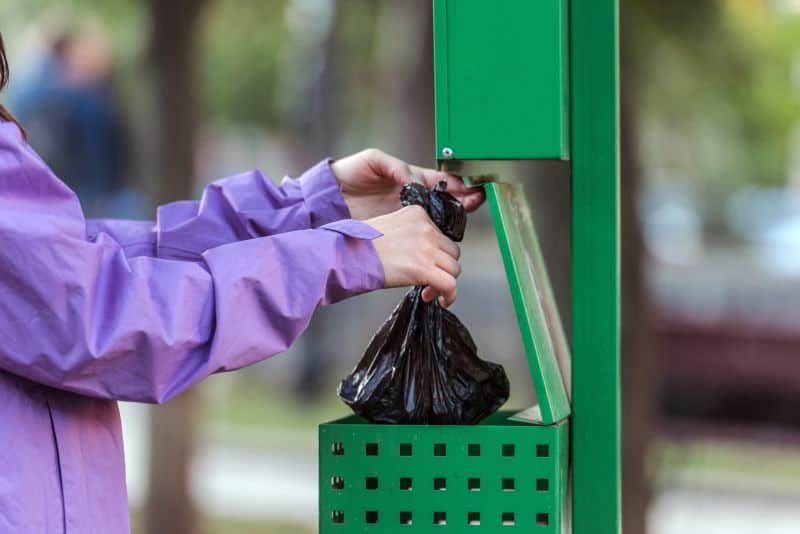
The Bottom Line: Biogas Harvesting
Biogas harvesting is a great way to deal with your dog’s waste, but it is only available in some areas. However, given the myriad benefits it provides, it is definitely worth doing some homework to find out if it is available in your region.
Dog Doo-Doo Disposal: FAQs
Dog waste disposal is a rather complicated subject, so owners often have questions about the process. We’ll try to answer some of the questions below, which we may not have addressed earlier.
What Should I Do With My Dog’s Poo Until Garbage Day?
Many of the techniques suggested in this article involve composting of some sort, which will help contain the mess and prevent odors from developing.
But, if you don’t want to go with the composting route, there are a couple of things you can do to hide the smell of your dog’s poo until garbage day.
The easiest of these options is a dog poop storage bin, like the Pet Waste Wizard BioBin discussed above. This will help prevent odors as you wait for garbage day.
Alternatively, you could make a DIY waste bin (with a tight-fitting lid) and simply store it in an out-of-the-way place, where you won’t notice the odors.
Is Throwing Away Dog Poop Illegal?
No, throwing away dog poop is perfectly legal in most areas.
Of course, the laws on this differ quite a bit from location to location, so you should check your local laws first.
Some garbage collection centers and services might not pick up dog poop, but that doesn’t mean it is illegal to throw it out in your area. Be sure to check with your current service to ensure that they will accept your trash with dog poop in it.
If they don’t, you could find a dog poop collection service, which will often come and take all the poop out of your yard for you.
Is Burning Dog Poop Harmful?
Firstly, burning dog poop is not going to smell pleasant in the least. It also isn’t going to burn particularly well or fast, so it may be more work than it is worth.
While the fire will kill most of the parasites and bacteria, this isn’t the case for every potential microbe your dog’s feces might contain.
Therefore, it is not a 100% safe method.
Some of these bacteria might be thrown up into the air with the smoke and can enter your mouth and nose if you’re close by.
The smoke and ash from the fire may also be contaminated with bacteria, landing throughout your yard and infecting it.
Given these issues, as well as the general environmental harm smoke causes and the safety risks associated with fires, we don’t recommend this method for poop disposal.
How Do I Dissolve Dog Poop in the Yard?
Several sprays contain enzymes that break down dog poop. Doggie Doo Dissolver is one of the most popular options. With this spray, you do not have to handle your dog’s waste in the least. Instead, it dissolves within minutes after it is sprayed.
Unfortunately, it isn’t easy to find this product — at least currently. We weren’t able to find it for sale anywhere yet, but keep an eye out for it in the future.
Why Should I Pick Up My Dog’s Poop?
After reading this article, you might decide just to leave your dog’s poop be. However, there are a couple of reasons why this isn’t a good idea.
It’s Polite. The last thing anyone wants to do is step in your dog’s poop. The only way to prevent this from happening is to pick it up and dispose of it properly. No one wants to be known as the person who doesn’t pick up after their dog. Some dogs also have the tendency to eat other dogs’ poop, so picking up doo-doo can do wonders for keeping all dogs safer.
It’s the Law. Many cities do have laws prohibiting owners from leaving their dog’s poop lying on other people’s property or mandate the routine collection and disposal of poop in your own yard. But these laws vary from place to place, so check with your local authorities just to be sure.
Dog Poop Carries Diseases. There are all sorts of bacteria and parasites that can be present in our dog’s poop. When you don’t pick up your dog’s feces, these bacteria can contaminate the surrounding area and water system. The number one cause of water contamination in many areas is dog poop. It poses a severe health threat for us and the natural area around our homes.
How exactly you pick up your dog’s poop doesn’t matter as long as you do pick it up. Dog poop plays a significant role in damaging our local waterways and it can make others sick – so it is essential to dispose of it properly.
Whether you decide to use compostable bags, flush the poop down the toilet, or use a composting system, you’ll be doing your part to keep our towns clean and healthy.
How do you get rid of your dog’s poop? Any secret DIY hacks that you’re in love with? Let us know in the comments below!
Looking for other ways to keep your yard looking great and healthy? Check out our guide on how to fix dog urine spots on your lawn as well as our round-up of the best dog-friendly shrubs and dog-safe flowers!
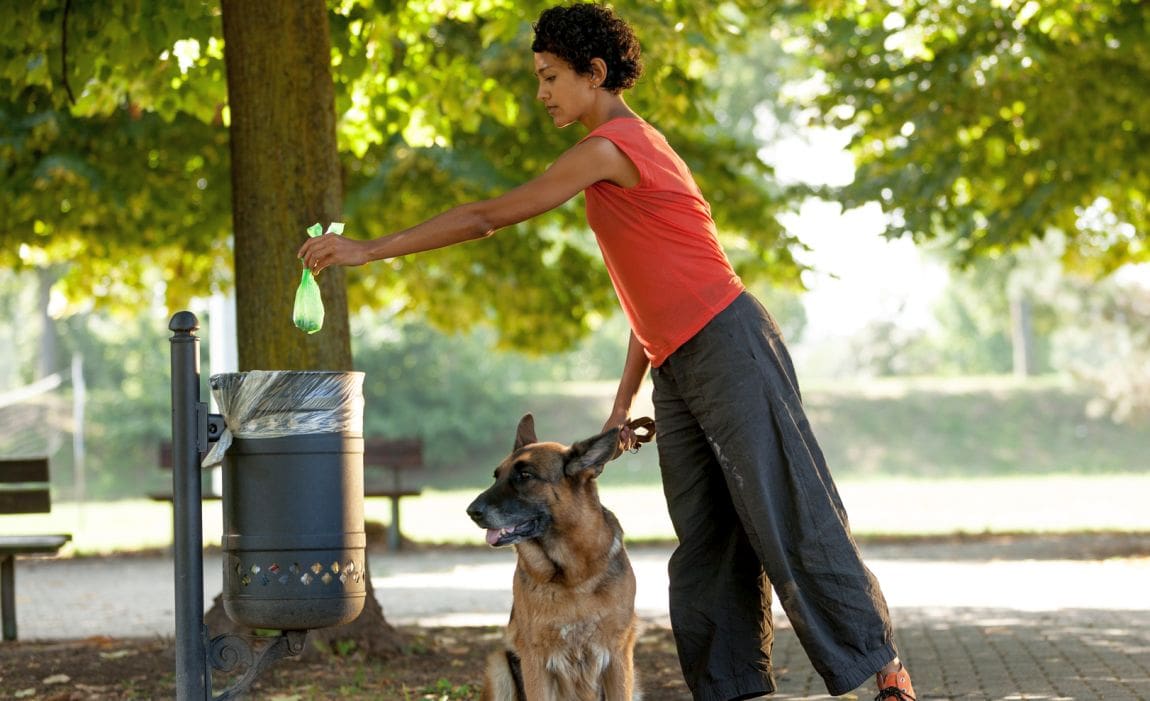








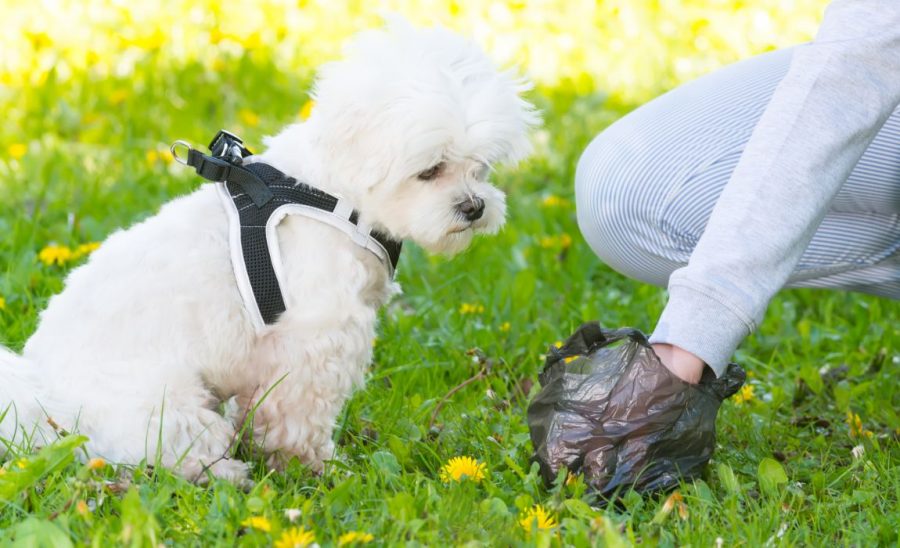


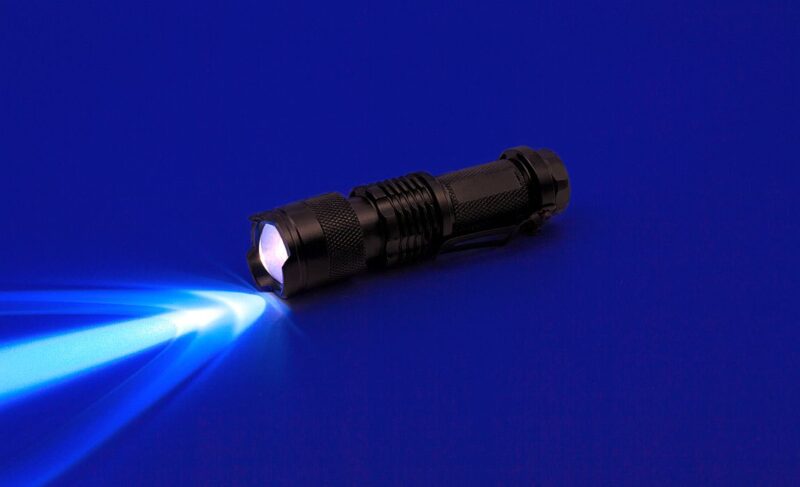

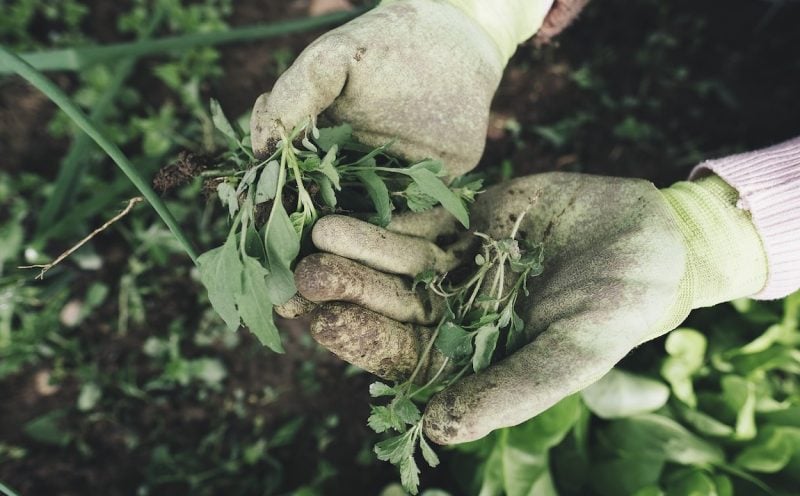
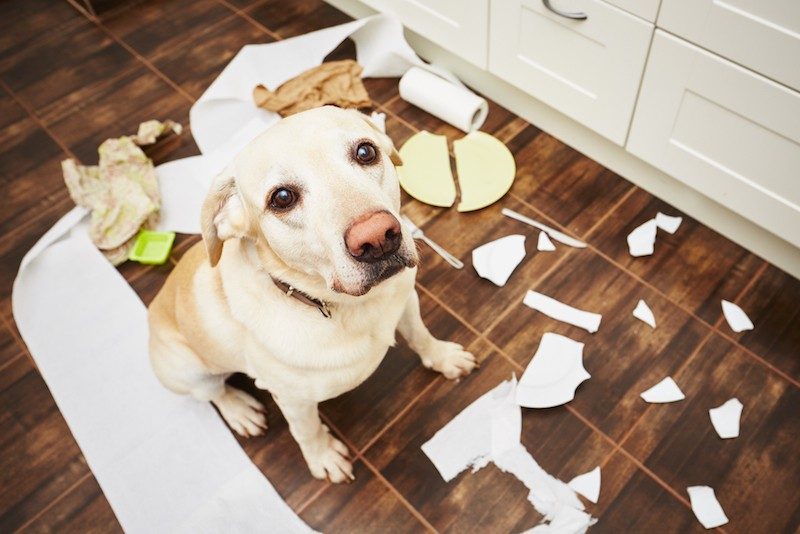

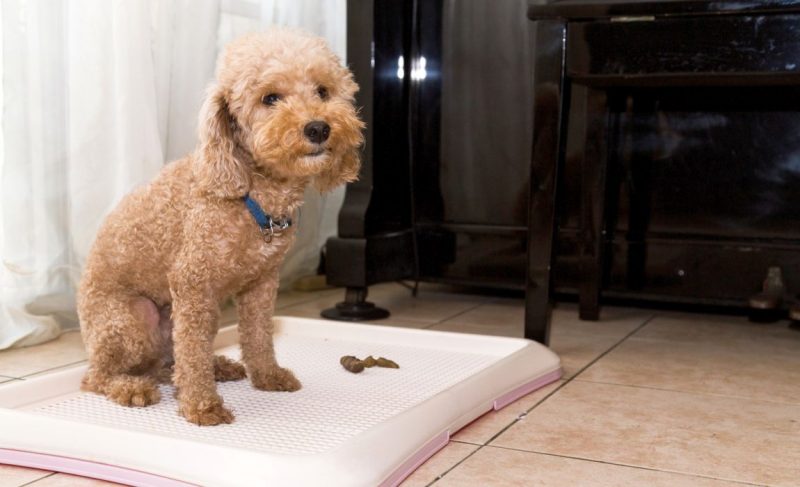
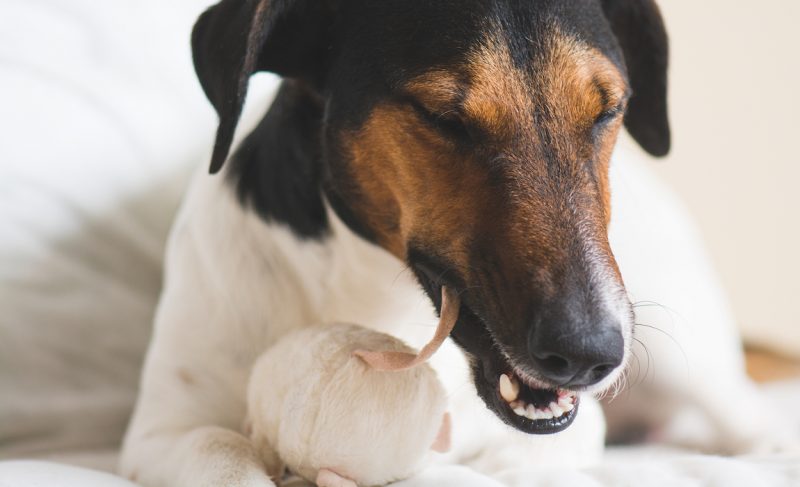

Leave a Comment